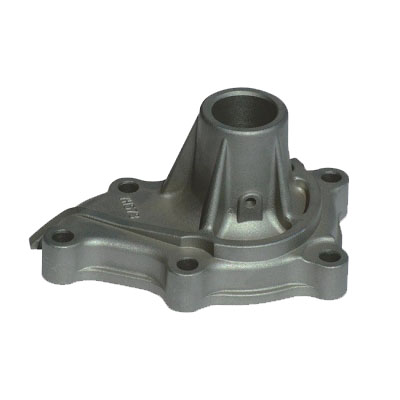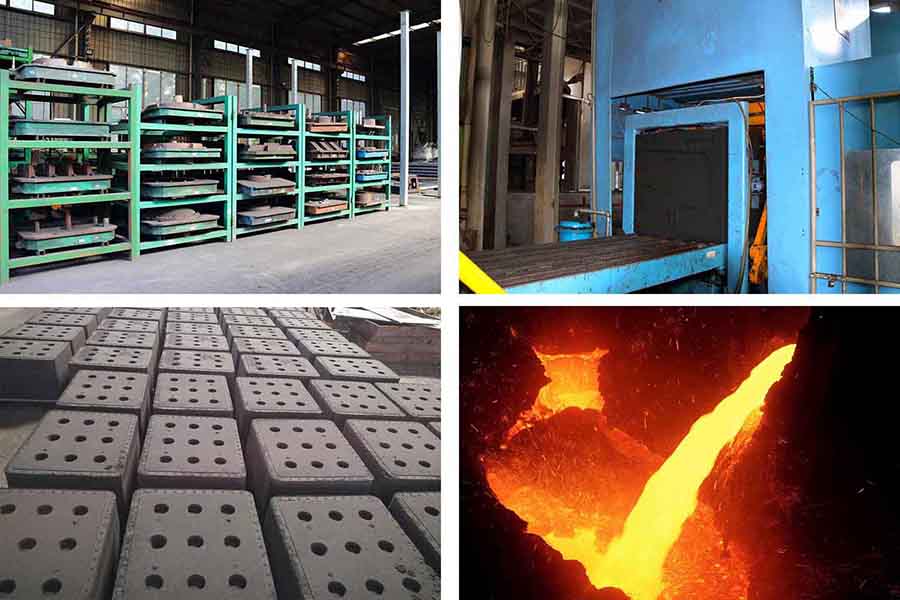
China Shell Moulding Casting Foundry
Material: Cast Iron, Cast Steel Process: Self-harden Shell Moulding Casting Weight: 1.8 kg Application: Freight Rail Cars
China Shell Moulding Casting Foundry for OEM Custom Casting Components with CNC Precision Machining Services
China Shell Moulding Casting Foundry for OEM Custom Casting Components with CNC Precision Machining Services
▶ Available Metals for Shell Moulding Casting:
• Cast Carbon Steel: Low Carbon Steel, Medium Carbon Steel and High Carbon Steel from AISI 1020 to AISI 1060.
• Cast Steel Alloys: 20CrMnTi, 20SiMn, 30SiMn, 30CrMo, 35CrMo, 35SiMn, 35CrMnSi, 40Mn, 40Cr, 42Cr, 42CrMo...etc on request.
• Cast Stainless Steel: AISI 304, AISI 304L, AISI 316, AISI 316L and other stainless steel grade.
• Cast Aluminium Alloys.
• Brass & Copper.
• Other Materials and Standards on request
▶ Shell Casting Capacities at RMC:
• Max Size: 1,000 mm × 800 mm × 500 mm
• Weight Range: 0.5 kg - 100 kg
• Annual Capacity: 2,000 tons
• Tolerances: On Request.
▶ Shell Mold Casting Procedures:
✔ Making Metal Patterns. The pre-coated resin sand needs to be heated in the patterns, so metal patterns are the necessary tooling to make shell molding castings.
✔ Making Pre-coated Sand Mold. After installing the metal patterns on the molding machine, the pre-coated resin sand will be shot into the patterns, and after heating, the resin coating will be molten, then the sand molds become solid sand shell and cores.
✔ Melting the Cast Metal. Using induction furnaces, the materials would be melted into liquid, then the chemical compositions of the liquid iron should be analyzed to match the required numbers and percents.
✔ Pouring Metal. When the melted iron meet the requirements, then they will be poured into the shell molds. Based on different characters of the casting design, the shell molds will be buried into green sand or stacked up by layers.
✔ Shot Blasting, Grinding and Cleaning. After the cooling and solidification of the castings, the risers, gates or additional iron should be cut off and removed. Then the iron castings will be cleaned by sand peening equipment or shot blasting machines. After grinding the gating head and parting lines, the finished casting parts would come, waiting for the further processes if needed.
▶ Post-Casting Process
• Deburring & Cleaning
• Shot Blasting / Sand Peening
• Heat Treatment: Normalization, Quench, Tempering, Carburization, Nitriding
• Surface Treatment: Passivation, Andonizing, Electroplating, Hot Zinc Plating, Zinc Plating, Nickel Plating, Polishing, Electro-Polishing, Painting, GeoMet, Zintec.
• Machining: Turning, Milling, Lathing, Drilling, Honing, Grinding.
The name no-bake originated from the oil-oxygen self-hardening invented by the Swiss in early 1950, that is, dry oils such as linseed oil and tung oil are added with metal desiccants (such as cobalt naphthenate and aluminum naphthenate) and oxidant (such as potassium permanganate or sodium perborate, etc.). Using this process, the sand core can be hardened to the strength required for mold release after being stored for several hours at room temperature. It was called room temperature hardening (Air Set), self hardening (Self Set), cold hardening (Cold Set) and so on. But it has not reached the real self-hardening, that is, no baking (No Bake), because the finished mold (core) needs to be dried for several hours before pouring to achieve complete hardening.
"Self-hardening sand" is a term that appeared after the foundry industry adopted chemical binders, and its meaning is:
1. In the sand mixing process, in addition to adding a binder, a solidifying (hardening) agent that can harden the binder is also added.
2. After molding and core making with this kind of sand, no treatment (such as drying or blowing hardening gas) is used to harden the mold or core, and the mold or core can harden by itself.
From the late 1950s to the early 1960s, the real self-hardening method without oven was gradually developed, namely the acid-cured (catalyzed) furan resin or phenolic resin self-hardening method, and the self-hardening oil urethane method was developed in 1965. The phenolurethane self-hardening method was introduced in 1970, and the phenolic ester self-hardening method appeared in 1984. Therefore, the concept of "self-setting sand" is applicable to all chemically hardened molding sands, including self-setting oil sand, water glass sand, cement sand, aluminum phosphate bonded sand and resin sand.
As a self-hardening cold box binder sand, furan resin sand is the earliest and currently most widely used synthetic binder sand in Chiese foundry. The amount of resin added in molding sand is generally 0.7% to 1.0%, and the amount of added resin in core sand is generally 0.9% to 1.1%. The content of free aldehyde in furan resin is below 0.3%, and some factories have dropped to below 0.1%. In the foundries in China, the furan resin self-hardening sand has reached the international level regardless of the production process and the surface quality of the castings.
After mixing the original sand (or reclaimed sand), liquid resin and liquid catalyst evenly, and filling them into the core box (or sand box), and then tighten it to harden into a mold or mold in the core box (or sand box) at room temperature, the casting mould or casting core were formed, which is called self-hardening cold-core box modeling (core), or self-hardening method (core). The self-hardening method can be divided into acid-catalyzed furan resin and phenolic resin sand self-hardening method, urethane resin sand self-hardening method and phenolic monoester self-hardening method.
The basic characteristics of self-hardening molding casting process are:
1) Improve the dimensional accuracy of castings and the surface roughness.
2) The hardening of the mold (core) sand does not require drying, which can save energy, and inexpensive wood or plastic core boxes and templates can also be used.
3) Self-hardnening molding sand is easy to compact and collapse, easy to clean up castings, and old sand can be recycled and reused, which greatly reduces the labor intensity of core making, modeling, sand falling, cleaning and other links, and it is easy to realize mechanization or automation.
4) The mass fraction of resin in sand is only 0.8%~2.0%, and the comprehensive cost of raw materials is low.
Because the self-hardening method has many of the above-mentioned unique advantages, the self-hardening method is not only used for core making, but also used for casting moulding. It is especially suitable for single piece and small batch production, and can produce cast iron, cast steel and non-ferrous alloy castings. Some Chinese foundries have completely replaced clay dry sand molds, cement sand molds, and partially replaced water glass sand molds.
 русский
русский




